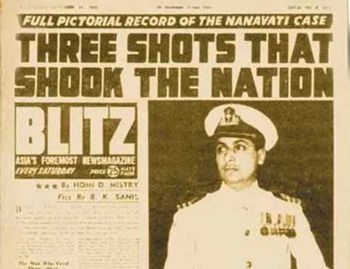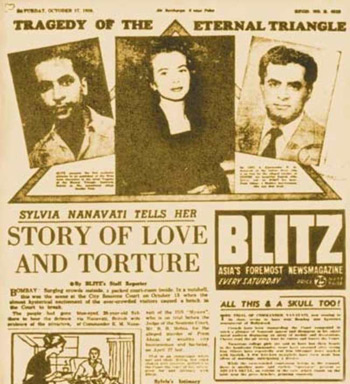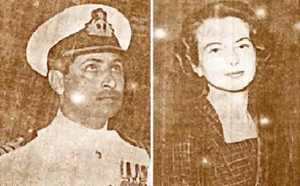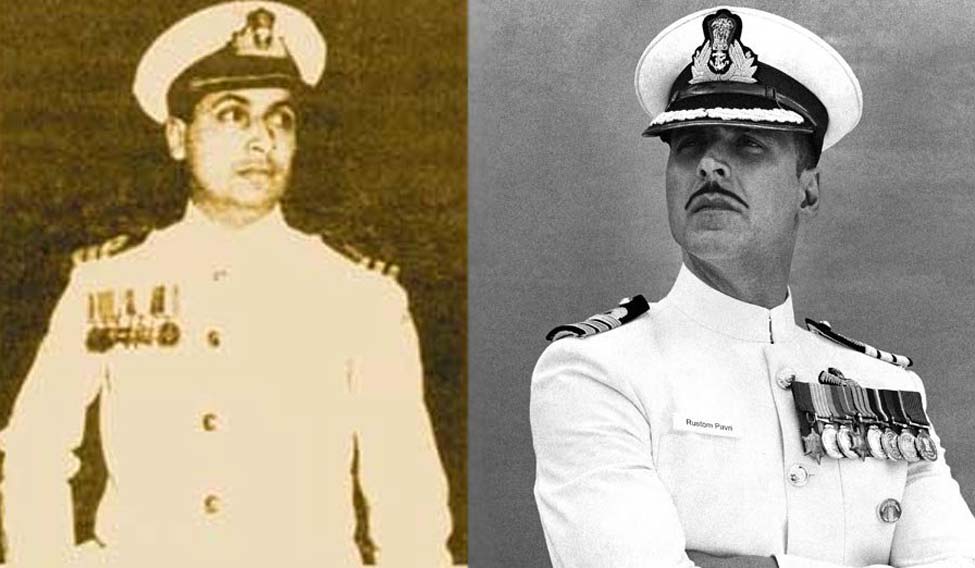Akshay Kumar-starrer Rustom's tagline, “Three shots that shocked the nation”, has a past. The film is based on the real-life story of Kawas Manekshaw Nanavati, an Indian Navy officer, who was sentenced to life imprisonment for killing his wife's paramour in 1959. Blitz, a popular investigative weekly tabloid, which shut down in the 1990s, carried the story on its front page, with an all-caps headline, “THREE SHOTS THAT SHOCKED THE NATION”.

The famous 1959 case of K.M. Nanavati vs State of Maharashtra not only shocked the nation, but also changed the face of the Indian judicial system.
On April 27, 1959, Commander Nanavati, a Parsi, shot his wife Slyvia's lover Prem Bhagwandas Ahuja with his service revolver. After committing the murder, he confessed to the crime to the provost marshal of the Western Naval Command who advised him to surrender to the police. He turned himself in in front of the deputy commissioner of police.
Nanavati had the reputation of being a patriotic, morally-upright officer. Also, he had no prior history of criminal charges. The case received extensive media coverage and Nanavati, on emotional grounds, garnered huge support from the public and the Parsi community. A sympathetic jury declared Nanavati, accused under section 302, not guilty by a majority of 8-1. However, the Bombay High Court dismissed the verdict and retried the case as a bench trial.
Later, Nanavati was convicted and sent to life imprisonment under Section 302 of the Indian Penal Code. This was the last case to be heard as a jury trial in India, before the government abolished jury trials as an aftermath of the case, thus, changing the justice delivery mechanism of the country.

The background
Nanavati married English-born Sylvia in Portsmouth, England, in 1949. Due to the nature of Nanavati's work, the couple stayed in different places. Finally, the couple, with their three children, shifted to Mumbai (then Bombay). Still, Nanavati's naval assignments kept him away from the family for long periods. Meanwhile, Sylvia developed friendship with Nanavati's friend Prem Ahuja, a Bombay-based businessman. Gradually, the friendship grew into illicit intimacy. Sylvia wanted to divorce Nanavati and marry Ahuja, but he refused. She also came to know about Ahuja's involvement with other women.
On the day of the crime, Sylvia confessed about the affair to her husband, who had just returned home after an assignment. A shaken Nanavati dropped his family at the Metro Cinema, for a show he had promised earlier, but did not join them. Instead, he drove to the Naval base, collected his revolver and six cartridges on a false pretext, and went straight to Ahuja. He asked Ahuja if he would marry Sylvia and look after the children. According to court records, Ahuja retorted, “Am I to marry every woman I sleep with?” Nanavati shot him dead.
The most debated point in the case was whether it was a premeditated murder or an action triggered by 'heat of the moment'. Nanavati pleaded not guilty, his defence argued it as a case of culpable homicide, with a maximum punishment of 10 years, and the prosecution argued it was premeditated murder, which could mean a death sentence or lifetime imprisonment.
Nanavati's high reputation, clean background and public pressure are said to have influenced the jury in the Greater Bombay sessions court to pronounce him not guilty.
 File photos of K.M. Nanavati and his wife Sylvia
File photos of K.M. Nanavati and his wife Sylvia
The case was referred to the Bombay High Court, which agreed with the prosecution’s argument and sentenced Nanavati to life imprisonment for culpable homicide amounting to murder. The Supreme Court upheld the conviction in 1961.
What made the case crucial to the Indian judicial system was the fact that the jury's decision favouring Nanavati showed how a jury can be misled by external factors, triggering the Indian government's decision to abolish jury trials.
By then, the media, public, the Indian Navy and the Parsi community had come together portraying Nanavati as the victim of foul play and demanding his release. Ahuja's sister, Mamie Ahuja, was persuaded to forgive Nanavati. She gave her assent for his pardon in writing. Nanavati was released after spending three years in jail.
Later, Nanavati shifted to Canada with his wife Sylvia and three children. He died in 2003.
Rustom, scheduled for release on Friday, is not the first film to bring the case on the big screen. R.K. Nayar’s Ye Raaste Hain Pyaar Ke (1963) and Gulzar’s Achanak (1973) too were inspired by the case.





